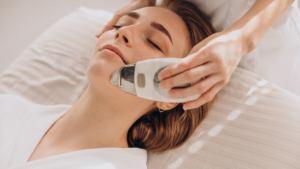Introduction
Investing in a haircutting machine for personal use is a significant decision that demands meticulous consideration of various factors to guarantee the acquisition of the most suitable tool for individual needs. This comprehensive guide aims to delve deeply into the essential aspects that individuals should carefully take into account when navigating the multitude of options available in the market. By offering detailed insights and comprehensive information, the goal is to empower users with the knowledge needed to make well-informed decisions, ensuring that the chosen haircutting machine aligns seamlessly with their unique preferences, requirements, and desired hairstyling outcomes. As we explore each critical factor, from blade types to power sources, motor types, additional features, maintenance, brand reputation, ergonomics, budget considerations, and seeking user recommendations, individuals will gain a profound understanding of the nuanced elements that contribute to the selection of the right haircutting machine for their home use. This guide serves as a comprehensive resource, equipping users with the knowledge and confidence to make choices that not only meet immediate grooming needs but also result in a satisfying and reliable tool in their personal grooming arsenal.
Understanding the Basics of Haircutting Machines
Before delving into the specific features of haircutting machines, it’s crucial to understand the basics. Haircutting machines, also known as clippers, are designed for trimming and cutting hair. They consist of a set of oscillating blades that move back and forth to cut hair with precision. These machines are versatile tools suitable for various hair lengths and styles.
Blade Types:
One of the most critical factors to consider when choosing a haircutting machine is the type of blades it uses. Different blade types offer varying cutting lengths and styles. Detachable blades provide flexibility, allowing users to switch between sizes for different hair lengths. On the other hand, adjustable blades offer a customizable cutting experience, enabling users to change the length without switching blades. Understanding the advantages of each type helps users determine which suits their preferences and desired hairstyles.
Power Sources: Corded vs. Cordless Haircutting Machines
The power source of a haircutting machine is another crucial consideration. Corded machines are powered by an electrical cord, ensuring a constant and uninterrupted power supply. These are ideal for individuals who prioritize continuous operation without worrying about battery life. On the other hand, cordless machines operate on rechargeable batteries, providing mobility and flexibility. Users should weigh the convenience of cordless operation against the potential limitations of battery life, ensuring it aligns with their intended usage.
Motor Types:
The motor type of a haircutting machine significantly influences its performance and noise level. There are generally two types of motors: rotary and magnetic. Rotary motors are known for their high power and are suitable for thick or wet hair. However, they tend to be bulkier and louder. Magnetic motors, on the other hand, are lightweight, quieter, and efficient for general use. Understanding the trade-offs between power and noise level helps users choose a machine that aligns with their preferences and needs.
Additional Features:
Modern haircutting machines come with a range of additional features aimed at enhancing the user experience. These features may include adjustable taper levels, multiple guide combs for different lengths, and ergonomic designs for comfortable handling. Users should evaluate these additional features based on their skill level, the complexity of hairstyles they intend to achieve, and their overall comfort during use.
Maintenance and Durability:
Ensuring the longevity of a haircutting machine involves proper maintenance. Regular cleaning and oiling of blades are essential to prevent rust and maintain sharpness. Users should choose machines with detachable or washable blades for easy cleaning. Additionally, considering the durability of the overall construction, including the housing and internal components, contributes to a more reliable and long-lasting investment.
Choosing the Right Haircutting Machine Brand
Brand reputation plays a significant role in the reliability and quality of a haircutting machine. Established brands often have a track record of producing durable and efficient tools. Researching and reading reviews about different brands can provide valuable insights into the experiences of other users, helping individuals make informed decisions about the reliability of the brand they choose.
Ergonomics and Comfort:
The design and ergonomics of a haircutting machine directly impact the user’s comfort and satisfaction during use. Machines with ergonomic designs, non-slip grips, and lightweight constructions contribute to a more comfortable and controlled haircutting experience. Users should consider the feel of the machine in their hands, especially if they plan on extended usage for intricate hairstyles.
Considering Budget:
While there is a wide range of haircutting machines available at different price points, users should strike a balance between quality and affordability. Investing in a reputable brand and a machine with essential features that align with individual needs ensures a more satisfactory and reliable purchase in the long run.
Seeking Recommendations and Reviews:
Before finalizing a decision, seeking recommendations from friends, family, or online communities can provide valuable insights. Reading user reviews and testimonials about specific models can offer real-world perspectives on the performance, durability, and overall satisfaction of a particular haircutting machine. Considering a variety of opinions helps users make a more well-rounded decision.
Conclusion:
In conclusion, choosing the right haircutting machine for home use involves a comprehensive evaluation of various factors. Understanding the importance of blade types, power sources, motor types, additional features, maintenance, brand reputation, ergonomics, budget, and user recommendations empowers individuals to make informed decisions that align with their unique preferences and hairstyling needs. By delving into the intricacies of these factors, users can confidently select a haircutting machine that not only meets their immediate requirements but also becomes a reliable and satisfying tool in their grooming arsenal.
FAQs (frequently-asked questions)
When selecting a haircutting machine for home use, consider factors such as blade types, power sources, motor types, additional features, maintenance requirements, brand reputation, ergonomics, and your budget. Each of these elements plays a crucial role in determining the overall performance and suitability of the machine for your specific needs.
Yes, there are various blade types, including stainless steel and ceramic. Stainless steel blades are durable and suitable for general use, while ceramic blades are known for staying sharper longer. The choice depends on your preferences and the type of hair you’ll be cutting.
Haircutting machines can be corded or cordless. Corded models offer continuous power but limited mobility, while cordless models provide flexibility but may require recharging. Consider your preferred balance between convenience and power continuity.
The motor type, often rotary or electromagnetic, affects cutting power and performance. Rotary motors offer more cutting power, making them suitable for thick hair, while electromagnetic motors are quieter and work well for general use.
Additional features like adjustable blade lengths, multiple guide combs, and easy cleaning mechanisms enhance the versatility and convenience of a haircutting machine. Choose a machine with features that align with your specific grooming needs.
Regular maintenance is crucial for optimal performance. Cleaning the blades, oiling the moving parts, and following the manufacturer’s maintenance guidelines ensure longevity and consistent cutting efficiency.
Yes, brand reputation is a valuable indicator of product quality. Established brands with positive reviews and a history of producing reliable grooming tools are more likely to deliver satisfactory performance.
Ergonomics, including the design and weight distribution, affect user comfort during prolonged use. A well-designed, ergonomic machine minimizes hand fatigue, making the grooming experience more enjoyable.
Set a budget based on your grooming needs and the features you require. Consider it as an investment in a tool that will provide consistent and reliable performance over time.
Yes, seeking recommendations from friends, family, or online reviews can provide valuable insights into the real-world performance of specific models. Consider the experiences of others who have used the machine for similar purposes.




